The front elevation to this Lancashire family home was suffering from water ingress and damp. The client had previously maintained the property with patch repairs, though it was now at an age where an overhaul had become necessary.
A number of issues were identified:
- Frazzled (crumbling) stone faces
- Slipped roofing slates
- Failed ridge bedding at roof pitch
- Chimney flaunching, pointing and leadwork
- Rotten dormer timber cladding
- Leaking dormer flat roof and gutter
Stonework (de-frazzle)
Ivy had persisted across the front elevation for many years. The plant roots bed themselves within the masonry, allowing moisture to ingress. Furthermore, the original mortar was a non-porous cement which traps moisture, causing the evaporation to forcibly transmit via the stone pores. Over time, the face of the stone had crumbled and had started to shear away.
We de-frazzled the loose face of the stone, using a scutch chisel to remove the affected sections. This process helps to prevent the compromised sections shearing, which may otherwise cause harm.
The original cement mortar was raked out. We recommended a lime mortar mix to the client that complemented the stone’s natural colour. The raked-out joints were deep-packed and filled with the lime mortar mix, protecting and monitoring the lime until it was carbonated.
Welsh Slates
Welsh Slate is a premium material that we often find unnecessarily compromised by substandard fixings. Using a skilled traditional roofer, an undisturbed Welsh Slate roof will give peace of mind upwards of 90 years.
The fixings for this Welsh slate roof were beyond their life expectancy. This had caused slates to slip, allowing water to degrade the substrate, with further signs of damage from previous ad-hoc repairers.
The original Welsh slates were removed, battens and felt replaced, and roof insulation added. The majority of the original slates were reused or resized, with the shortfall replenished from hand selected reclaimed Welsh slates.
Ridges
The bedding of the ridges had been laid poorly in a thick bed of cement. The ridges had failed to adhere to this unsuitable mix (and application there-of), which hardened and failed over time. Failing materials from this height can be extremely dangerous; The majority of debris had been caught by and had blocked the guttering.
We removed the ridges and problematic cement bed. Once the Welsh slates had been relaid, we replaced the ridges with an evenly distributed bed of a more flexible lime mortar mix.
Chimney
The chimneys to both sides of the terrace were reflaunched (recapped) and repointed in lime. The leadwork was replaced – bespoke formed and welded onsite by our in-house lead specialist.
Dormer
The exterior timber cladding was overhauled with UPVC low maintenance side panels. The original torch-on felt flat roof had failed. A new rubber flatroof was installed, with appropriate guttering.
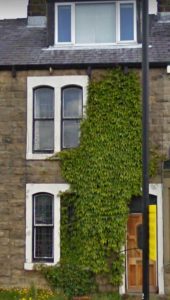
Extent of original greenery 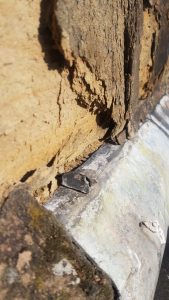
Close-up of failing stonework, requiring de-frazzle 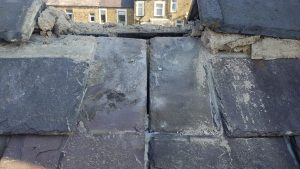
Failed ridge bedding mortar 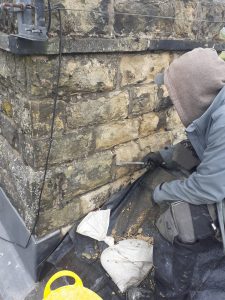
Stone de-frazzle of chimney stack in progress 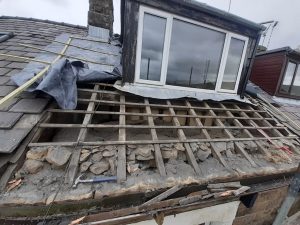
Stripped back roof 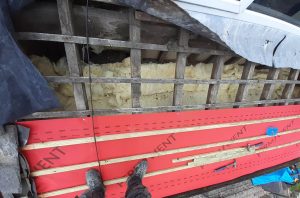
Laying insulation, felt, battens to roof 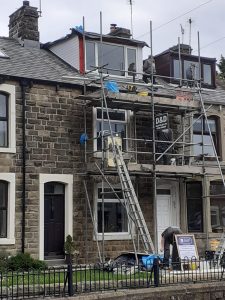
Repointing, re-slating, dormer works in progress 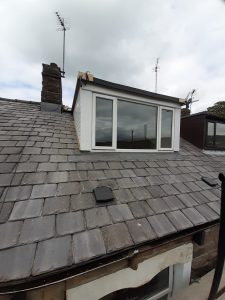
Completed Welsh slate re-roof 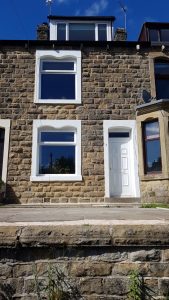
Completed front facade

